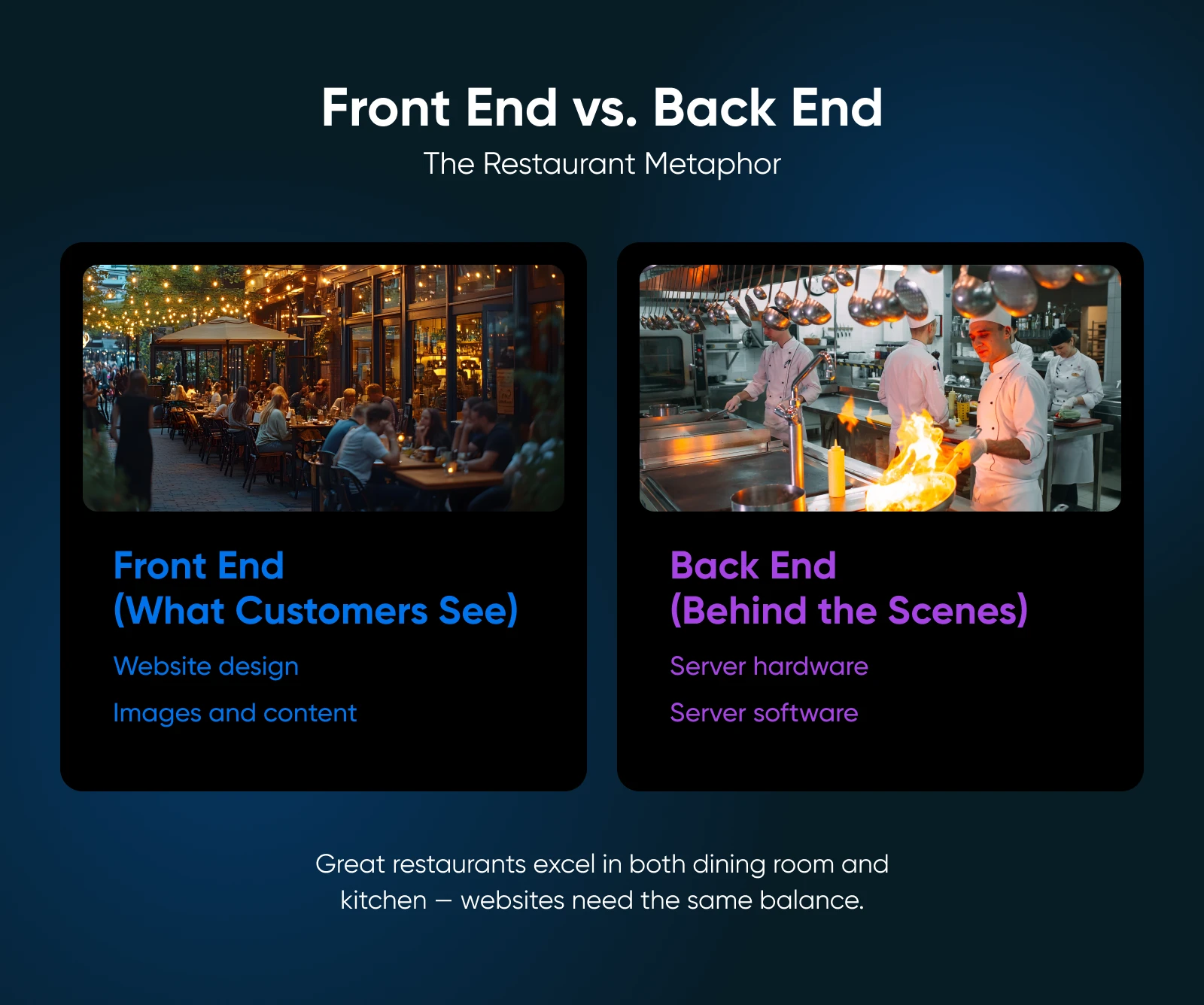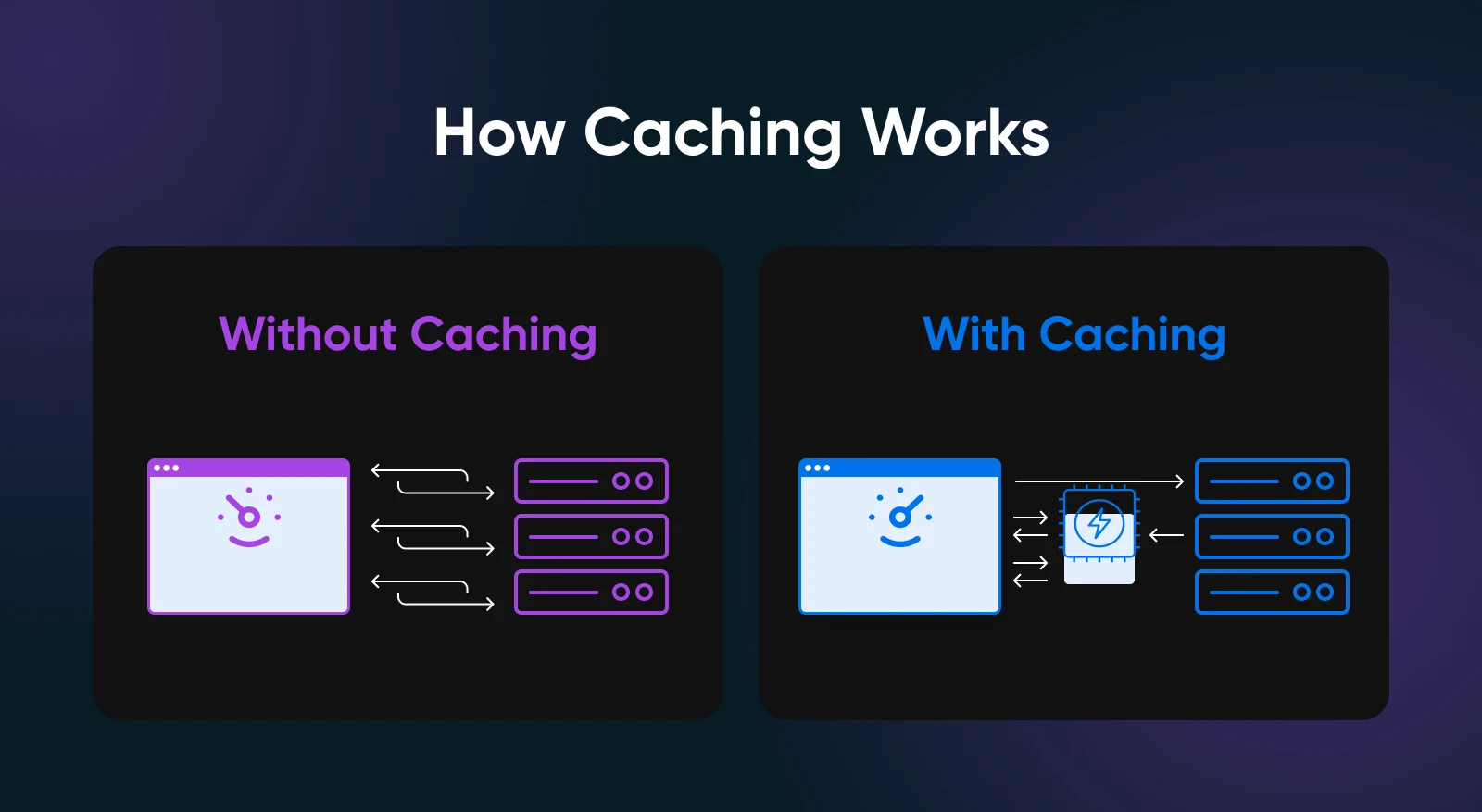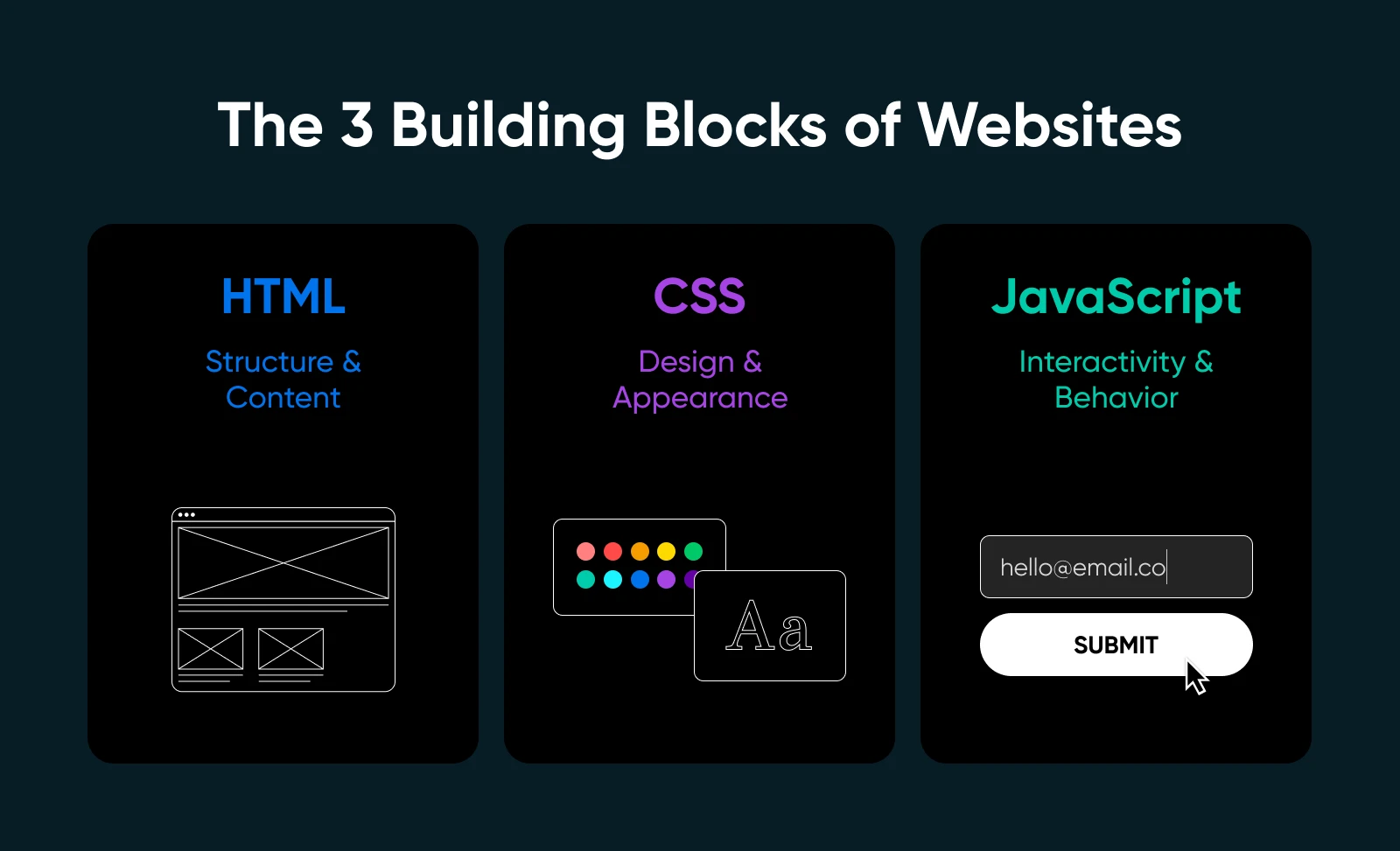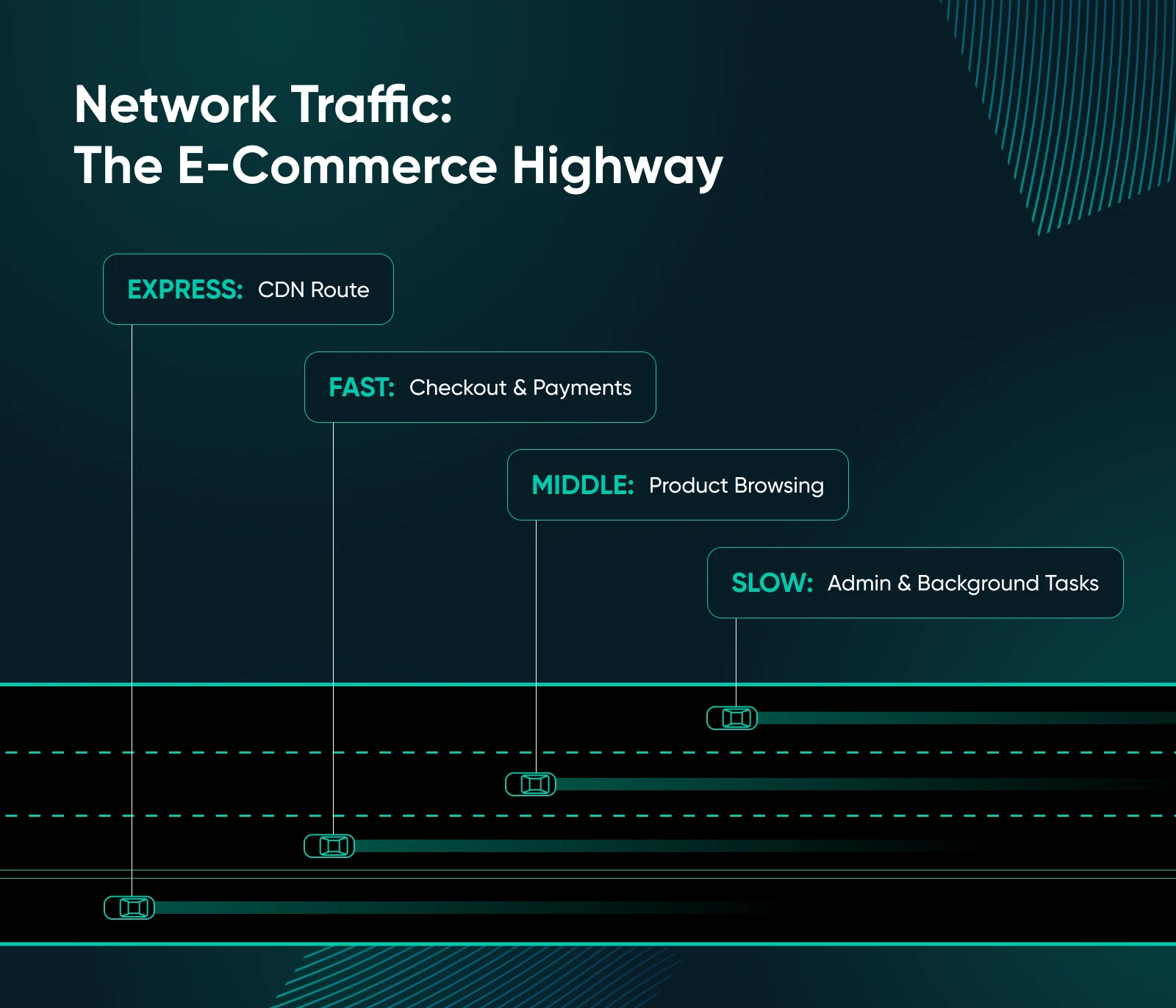You’ve taken the plunge. You’ve leveled up from shared internet hosting, and now your e-commerce web site is now not crammed right into a digital clown automobile with 50 different web sites. Nevertheless it nonetheless feels…slower than it ought to.
In case you’re working an e-commerce web site on a digital non-public server (VPS), you’re already forward of the shared internet hosting crowd. However are you actually benefiting from these assets you’re paying for?
Most likely not. (Don’t fear, we’re not judging.)
Excellent news: you’re not alone. Higher information: you’ll be able to repair this with out turning right into a full-stack wizard.
Welcome to your no-fluff information on optimizing your VPS for e-commerce, whether or not you’re prepping for an enormous sale or simply attempting to shave seconds off your load occasions.
Let’s begin on the root.
Why E-Commerce Websites Push VPS Internet hosting to Its Limits
Not all web sites are created equal. Consider working a portfolio web site or a weblog like parking a Vespa. In the meantime, working an e-commerce retailer is extra like juggling a fleet of supply vehicles throughout rush hour.
- Visitors isn’t regular — it surges: A well-timed e mail blast or a viral TikTok, and all of a sudden, your retailer’s getting 10x the guests. Can your server sustain?
- Extra pages = extra database calls: Product pages, filters, carts, logins, critiques…all these requests add up.
- Third-party scripts galore: Cost gateways, CRMs, stock instruments — they’re all a part of the enjoyable (and your efficiency downside).
- Individuals anticipate velocity: 1 in 4 guests bounce if a web page takes over 4 seconds to load. In e-commerce, velocity is survival.
A generic VPS setup isn’t all the time sufficient. You want one tailor-made to those distinctive calls for.
First…Is It Even Your VPS?
Earlier than you begin scaling up and throwing cash at greater plans, ask: Is that this truly a server situation…or only a bloated web site?
Right here’s the best way to inform:
Signs of a sluggish web site, not a sluggish server:
- Big, uncompressed photos
- Dozens of pointless plugins (good day, WordPress)
- Poorly coded themes
- JavaScript bloat from apps or trackers
Signs of an underpowered VPS:
- Slowdowns throughout site visitors spikes (however effective in any other case)
- Excessive CPU/reminiscence utilization even after front-end cleanup
- Crashes throughout checkouts or gross sales occasions
- Server-side duties, like search or cart updates, that lag
Professional tip: Use instruments like Google PageSpeed Insights or GTmetrix to see what’s actually occurring.
Selecting the Proper Working System for E-Commerce
This half sounds dry, however your selection of working system can have an effect on efficiency.
- Ubuntu/Debian: Strong default. Straightforward to handle, loads of documentation, nice neighborhood assist.
- CentOS/AlmaLinux: In case you’re coming from cPanel land or choose a RHEL-style OS.
For e-commerce, Linux distributions like Ubuntu or CentOS sometimes outperform Home windows options due to:
- Decrease useful resource overhead (extra assets in your precise retailer)
- Higher safety profiles (fewer patches wanted)
- Extra optimization choices for net servers and PHP
In case you’re working a DIY VPS, Ubuntu 22.04 LTS affords a candy spot of recent options and long-term stability. In case you’re on a managed VPS like DreamHost’s, we’ve already optimized the OS — one other factor you don’t have to fret about.
The Two-Pronged Method to E-Commerce Velocity
Let’s discuss concerning the massive image for a second. Tackling a sluggish e-commerce web site isn’t nearly what’s beneath the hood of your VPS; it’s additionally about what you’re loading onto it.
Consider it as a two-pronged assault on sluggishness:
1. Entrance-end/utility optimization (the short wins and massive impacts). That is all about making your web site lighter, smarter, and quicker. We’re speaking about issues like caching, squashing these hefty picture information, utilizing a content material supply community (CDN), and maintaining your web site’s code clear. The aim right here is to scale back the demand your web site locations in your VPS within the first place.
2. Backend/server optimization (fine-tuning the engine). That is the place you pop the hood and dial in how your VPS handles the whole lot that’s left. Useful resource allocation, CPU tuning, reminiscence distribution — that is the good things that squeezes most efficiency out of your setup.
Get each prongs sharp, and also you’ll be slicing by way of load occasions like a sizzling knife by way of butter.

Let’s begin with the simple wins: the best way to lighten the load earlier than you even take into consideration server configs.
5 Fast Wins for Entrance-Finish Efficiency Optimization
Earlier than you begin adjusting reminiscence limits and scheduler settings, it’s value asking: Is your web site simply too heavy?
Optimizing your utility layer, the stuff your clients work together with, is commonly the quickest option to see massive efficiency good points.
1. Correct Caching (A Multi-Degree Method)
Caching is mainly instructing your web site and your guests’ browsers to recollect issues in order that they don’t need to do the identical work again and again.
There are a number of layers to this:
Browser Caching
You may inform your guests’ net browsers to avoid wasting a duplicate of the static elements of your web site, like your brand, background photos, and magnificence sheets (the information that make your web site look fairly). Once they click on to a different web page or come again later, their browser doesn’t need to re-download all that stuff. It simply pulls it from its reminiscence. Immediate familiarity, quicker hundreds.
Web page Caching
Web page caching shops a completely constructed HTML model of pages that don’t change a lot for every customer, like your homepage, class pages, or product listings. Most e-commerce platforms, like WordPress with WooCommerce, have superior caching plugins that deal with this. (Suppose WP Rocket or LiteSpeed Cache for those who’re on a LiteSpeed server — DreamHost helps varied setups!)
Object Caching
This can be a extra superior trick that helps your server keep in mind the outcomes of widespread duties or often accessed bits of information, just like the outcomes of database queries (e.g., “present me all purple sneakers”) or pre-compiled bits of your web site’s code.
Instruments like Redis or Memcached are sometimes used for this. It’s like your server maintaining sticky notes of widespread solutions as a substitute of recalculating them each time. In case you’re on a managed VPS, a few of this could be tuned for you, or DreamHost assist can provide steerage for those who’re diving this deep.

2. Picture and Media Optimization
E-commerce is visible, proper? Beautiful product pictures, perhaps some slick movies. Nonetheless, these massive information may be efficiency vampires for those who’re not cautious.
- Serve good sizes (responsive photos): Don’t ship an enormous, 3000-pixel-wide picture to somebody’s tiny cellphone display. Use strategies (just like the srcset attribute in HTML, or plugins that deal with it) to ship optimized picture sizes primarily based on the customer’s display.
- Embrace trendy picture codecs (like WebP): Newer picture codecs like WebP provide wonderful high quality at a lot smaller file sizes than conventional JPEGs or PNGs. Most trendy browsers love them. Present fallbacks, like a JPEG, for the stragglers. Many instruments and CDNs can auto-convert to WebP.
- Implement lazy loading: Why load a picture on the backside of an extended product web page if the customer hasn’t even scrolled down there but? Lazy loading waits till a picture is nearly to enter the display earlier than it hundreds. Sneaky, environment friendly, and nice for preliminary web page velocity.
- Compress, compress, compress: Use instruments like ShortPixel, TinyPNG, or the open-source Squoosh app to shrink picture file sizes with out making them appear like a pixelated mess. That is usually the largest win for picture optimization.
- Resize earlier than importing: In case your product picture will solely ever show at 800 pixels vast in your web site, resize it to 800 pixels vast earlier than you add it. Don’t add that large authentic out of your digital camera and hope the browser types it out. That simply wastes bandwidth and slows issues down.
Professional tip: For optimization functions, think about internet hosting movies on platforms like YouTube or Vimeo. They’re constructed for video supply and received’t lavatory down your VPS. Then, simply embed them in your web site.
In case you MUST self-host, right here’s what to do: compress your movies, use trendy codecs, and implement lazy loading or “click on to play” in order that they don’t attempt to load till somebody needs to observe.
3. Code Optimization
Consider your web site’s code (HTML, CSS, JavaScript) because the instruction guide your server and your guests’ browsers need to learn. If it’s messy, bloated, or complicated, issues decelerate.
JavaScript Optimization
JavaScript makes your web site interactive. Suppose picture sliders, cool pop-ups, prompt search. Nonetheless, an excessive amount of, loaded badly, can deliver issues to a crawl.
- Defer the unimportant: Load non-critical JavaScript information after the primary content material of your web page is seen. Your customer sees the vital stuff quicker.
- Bundle and minify: Mix a number of JavaScript information into fewer information, and minify them by eradicating all pointless characters, like areas and feedback that browsers don’t want.
- Cull the unused: In case your theme or a plugin is loading JavaScript for a function you don’t even use, discover a option to cease it (or use a lighter theme/plugin).
CSS Optimization
CSS makes your web site look good with colours, fonts, and layouts.
- Vital CSS first: For super-fast perceived efficiency, some people “inline” absolutely the minimal CSS wanted to fashion the highest a part of the web page that’s instantly seen. The remainder hundreds a bit of later. This is a little more superior however could make a giant distinction.
- Take away unused types: Over time, your stylesheets can get clogged with types for issues that now not exist or aren’t used. Instruments like PurgeCSS assist clear this up.
- Minify, minify, minify: Identical to with JavaScript, minifying your CSS information makes them smaller and quicker to obtain.
HTML Optimization
HTML is the fundamental construction of your pages.
Hold your HTML clear and semantic. Keep away from overly complicated constructions if an easier one will do. This isn’t normally the largest bottleneck, however clear code is glad code.

4. Plugin and Extension Pruning
This one’s large for platforms like WordPress/WooCommerce, Magento, and so on. It’s really easy to maintain including “only one extra plugin” till your web site is groaning beneath the burden.
Each plugin or extension provides extra code, extra potential database queries, and extra issues that may sluggish your web site down or battle with one another. That is what we name “plugin bloat.”
- Audit commonly: As soon as 1 / 4, undergo each plugin/extension. Ask your self: “Do I actually need this? What worth is it actually including?” If the reply is “Umm…” or “I forgot,” it’s in all probability time to say goodbye.
- High quality over amount: One well-coded, complete plugin is commonly higher than three clunky ones that do bits and items of the identical job.
- Disable, don’t simply deactivate (if testing): In case you’re testing whether or not you want one thing, deactivating is ok. Nonetheless, for long-term removing, delete it correctly.
- Examine efficiency affect: Some plugins are recognized useful resource hogs. In case your web site is sluggish, strive selectively disabling plugins (on a staging web site, please!) to see if you’ll find a wrongdoer.
5. Content material Supply Optimization
We touched on CDN caching, however a CDN is a broader efficiency optimization technique that deserves its personal highlight.
A CDN is a community of servers unfold all all over the world. It takes copies of your web site’s “static property,” like photos, CSS, and JavaScript, and shops them on these servers.
Integrating a CDN (like BunnyCDN, StackPath, or Cloudflare, which DreamHost usually has integrations or suggestions for) is normally simple. Many provide picture optimization and different cool options on the “edge” (their servers), additional boosting efficiency.
As a result of the CDN handles plenty of the supply work in your static information, your VPS has much less to do. It could actually focus its valuable assets on dynamic duties like processing orders and managing person accounts.
5 Methods for Smarter Backend VPS Useful resource Allocation
That is the place we ensure your server is primed to deal with no matter your superior, optimized e-commerce web site throws at it.
1. Reminiscence (RAM) Allocation
RAM is usually your most valuable useful resource for e-commerce. Right here’s the best way to allocate it successfully:
- PHP reminiscence allocation: Alter your php.ini settings to allocate adequate reminiscence in your e-commerce platform.
- WooCommerce: Minimal 256MB, advisable 512MB for busy shops.
- Magento: Minimal 800MB, advisable 2GB for enterprise outlets.
- Shopify Customized Storefronts: Minimal 512MB for Node.js purposes.
- Database reminiscence: MySQL/MariaDB efficiency hinges on correct reminiscence allocation.
- Allocate ~30% of obtainable system RAM to “innodb_buffer_pool_size.”
- For MySQL 8.0+, deal with innodb_buffer_pool_size and keep away from utilizing the deprecated question cache.
- Use innodb_buffer_pool_instances (1 per 1GB of buffer pool).
- For top-traffic shops, think about dedicating a separate VPS only for the database.
- Net server reminiscence: NGINX sometimes makes use of much less RAM than Apache.
- For Apache: Alter MaxRequestWorkers primarily based on accessible RAM (divide usable RAM by common course of measurement).
- For NGINX: Configure “worker_connections” and “worker_processes” primarily based on CPU cores and accessible reminiscence.
- Caching companies: Dedicate particular quantities of RAM to caching.
- Redis: For session storage and object caching (measurement primarily based on precise information wants, monitor with redis-cli information reminiscence).
- Memcached: Various for object caching (configure slab allocation primarily based on key distribution).
- Swap configuration:
- For servers <2GB RAM, set swap equal to RAM quantity.
- For servers 2–8GB RAM, set swap to half of RAM.
- For servers >8GB, set swap to 4GB or use swappiness tuning.

2. CPU Useful resource Allocation
E-commerce websites are typically CPU-intensive throughout checkout processes:
- Course of precedence: Set larger CPU priorities for:
- Cost processing scripts.
- Checkout web page rendering.
- Vital API connections.
- PHP course of administration: Fantastic-tune PHP-FPM settings:
- pm.max_children = (Whole RAM – Reserved RAM) / PHP course of measurement.
- pm.start_servers = 20% of max_children.
- pm.min_spare_servers = 10% of max_children.
- pm.max_spare_servers = 30% of max_children.
- Think about using pm = ondemand for lower-traffic websites to preserve assets.
- Background duties: Offload CPU-intensive operations:
- Transfer picture technology to scheduled duties.
- Course of reporting throughout off-hours.
- Deal with e mail technology asynchronously.
3. Disk I/O Allocation
Disk operations can change into a silent bottleneck.
- Separate essential directories: Place high-traffic directories on totally different volumes.
- /var/lib/mysql on devoted SSD quantity.
- Media/product picture directories on separate quantity.
- Log information on lower-priority storage.
- I/O scheduling: Use acceptable I/O schedulers.
- For SSDs in trendy kernels: Use mq-deadline or none.
- For HDDs: Use bfq for higher equity.
- For digital environments: Use deadline scheduler.
- Alter utilizing: echo scheduler_name > /sys/block/[device]/queue/scheduler (exchange [device] with precise gadget identify like sda).
- I/O priorities: Set decrease priorities for non-critical operations.
- Backups.
- Log rotation.
- Bulk imports.
4. Community Useful resource Allocation
Community assets are sometimes neglected, however they’re essential for image-heavy shops.
- Visitors prioritization:
- Prioritize checkout web page site visitors.
- Give API connections secure bandwidth.
- Restrict admin panel bandwidth throughout peak hours.
- Implement charge limiting for crawlers and non-essential assets.
- CDN integration:
- Offload static property to CDN.
- Configure correct cache management headers for various asset varieties.
- Use picture optimization on the CDN degree.

5. Dynamic Useful resource Allocation for Visitors Patterns
E-commerce site visitors isn’t linear. It spikes throughout promotions and holidays.
- Time-based useful resource shifting:
- Allocate extra assets throughout enterprise hours.
- Scale back allocations throughout upkeep home windows.
- Schedule resource-intensive duties throughout quiet durations.
- Occasion-based allocation:
- Implement non permanent useful resource will increase throughout gross sales occasions.
- Use cgroups to dynamically alter useful resource limits.
- Create particular configuration profiles for high-traffic occasions.
Don’t Neglect: Safety Impacts Efficiency, Too
A sluggish web site doesn’t all the time imply unhealthy code or low assets. Generally, it’s unhealthy actors.
Bots, brute-force assaults, and background malware can eat up your CPU, hog bandwidth, and produce your retailer to a crawl.
Right here’s the best way to keep forward:
- Set up a WAF (Net Utility Firewall) to dam malicious site visitors earlier than it hits your server.
- Fee-limit login makes an attempt and disable XML-RPC for those who’re on WordPress.
- Scan commonly for malware or file injections.
- Hold your OS, plugins, and software program up to date. (Managed VPS? We’ve acquired you.)
How To Monitor VPS Sources (So You’re Not Firefighting on Black Friday)
Your VPS shouldn’t really feel like a black field. In case you wait till your web site crashes to research utilization, you’ve waited too lengthy. Right here’s the best way to regulate issues and scale earlier than issues get messy.
What to watch:
- CPU utilization (above 80% persistently = warning signal).
- RAM utilization (frequent swapping = your VPS is crying).
- Disk I/O bottlenecks (particularly throughout backups or imports).
- Uptime and response occasions (if these begin creeping up, one thing’s off).
Easy methods to monitor:
- Constructed-in DreamHost VPS dashboard.
- htop, atop, or glances for real-time Linux monitoring.
- Exterior instruments like UptimeRobot or New Relic.
When to scale:
- You discover constant slowdowns throughout peak hours.
- Gross sales occasions trigger efficiency drops or outages.
- Your backend is absolutely optimized, however bottlenecks stay.
Scaling with DreamHost is simple — simply improve your VPS plan from the dashboard and increase! Extra energy.
The Million-Greenback Query: Improve or Optimize?
A sluggish retailer doesn’t all the time imply you want an even bigger VPS. Generally it simply means too many bloated plugins, unoptimized photos, or missed caching alternatives.
Clear up first. Monitor second. Then scale provided that you’re nonetheless maxed out.
Managed VPS vs. DIY: Who’s Received Time for All This?
Let’s be sincere: tuning reminiscence buffers and optimizing PHP-FPM configs is not why you began an e-commerce enterprise.
| Function | DIY VPS | Managed VPS (like DreamHost) |
| OS and software program updates | Handbook | ✅ Automated |
| Server tuning | Your job | ✅ Pre-optimized |
| Safety patching | You patch it | ✅ We do |
| Assist | StackOverflow | ✅ 24×7 DreamHost consultants |
| Peace of thoughts | ❌ | ✅ Sure, please |
Give it some thought: in case your time is value even $30/hour, spending 5 hours a month on server administration prices you $150 in alternative price. A managed VPS answer may cost $30–50 greater than DIY, however you’re nonetheless popping out forward. Plus, the professionals in all probability do a greater job anyway.
TL;DR: Your VPS Ought to Be Pulling Its Weight
In case your retailer feels sluggish, clunky, or simply plain unpredictable, don’t assume it is advisable throw cash at an even bigger VPS.
Begin by reducing the bloat. Optimize the entrance finish. Tune the again finish. Monitor your utilization like a hawk. Then, and solely then, resolve if it’s time to scale up.
And if all that sounds exhausting? It doesn’t need to be. A managed VPS (like the type DreamHost affords) handles the heavy lifting for you. We’re speaking updates, efficiency tweaks, and server babysitting, all taken off your plate.
You’ve already graduated from shared internet hosting. Now, ensure your VPS is working for you.
Discover DreamHost’s Managed VPS Plans and get again to what actually issues: working your retailer, not your server.

Take Cost with Versatile VPS Internet hosting
Right here’s how DreamHost’s VPS providing stands aside: 24/7 buyer assist, an intuitive panel, scalable RAM, limitless bandwidth, limitless internet hosting domains, and SSD storage.
Did you get pleasure from this text?









